目标一:词库的构成、词库单词的分类和组织。
| Step1 Explore the elements of a word bank.
活动一:Study an English-English dictionary to fine the elements of a word bank.
Look up the word demand in their own dictionary and compare the entry in their dictionary with the example.
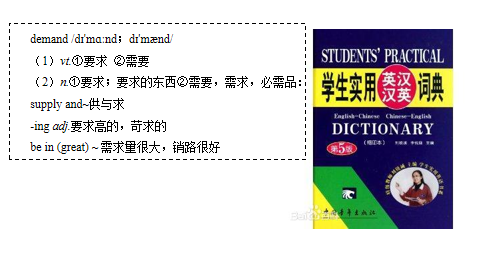
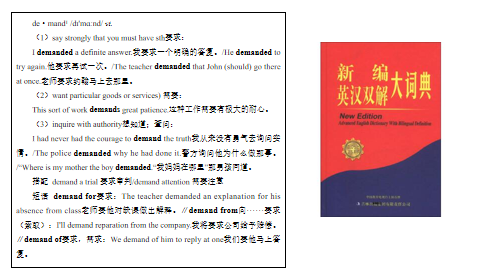
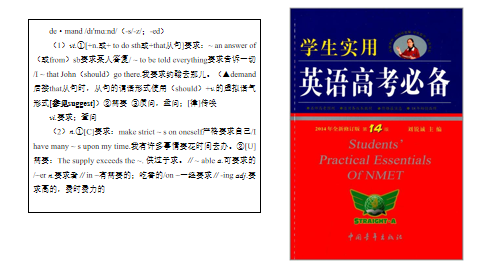
Step 2 Discussion
Work in groups of four and discuss the different forms of entry and discuss which is better and which they prefer.
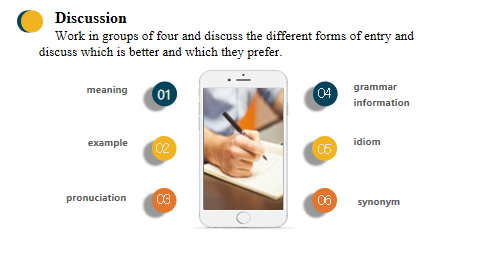
Step3 Make a word bank
活动二:Decide how to organize the words.
work in groups and decide how to organize the words by thinking the following aspects:
1. in alphabetical order. A, B, C, etc.
2. by group:all the words related to a certain topic, pronunciation, part of speech, etc.
3. by commonly confused words, such as "chicken/kitchen, diary/dairy", etc.
4. by memory devices:words that you have memorized together, such as words with the same roots, etc.
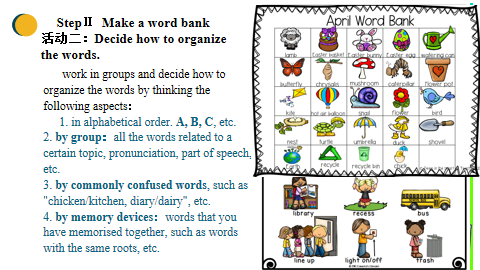
| 通过在班上指导学生各自通过查阅自己的英语字典,加强学生借助词典解决英语学习困难的意识。
通过小组讨论引导学生总结归纳单词词库的几个重要的组成部分,为后面创建适合个人的词库做好铺垫。
通过小组讨论决定按不同的方面归类整理词汇库的单词,
| 感知与注意、获取与梳理
获取与梳理、概括与整合
获取与梳理、概括与整合
| 6mins
6mins
8mins
|
| Step 4 State the entries
Illustrate the entries by adding drawings, tables, cartoons and diagrams.
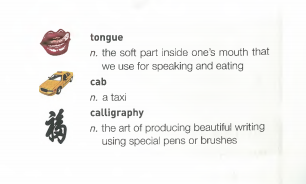 、
、
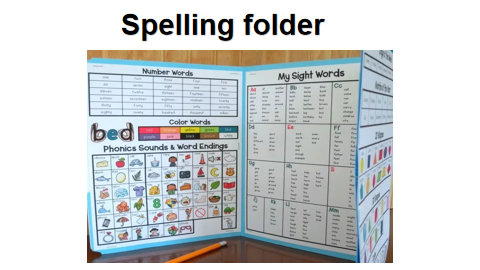
Step 5 Exchange ideas
1. Work in pairs. Exchange ideas with each other about how you made your word bank.
2. Then discuss how you are going to use it to help your English study.
3. Create your group’s work
Step 6 Homework:
Create your own bank and update it each week.
| 通过指导学生根据自身需要借助图画、表格、卡通、图表等帮助解释词汇库的单词,加强学生根据学习目的和需要调整学习方式的意识,提高学习效率。
设计特定的场景,让学生在轻松愉快的环境中体验创建个人词库,调动课堂气氛,激发出学生主动学习的愿望。
进一步实践阶段:通过自主、合作、探究的学习方式,综合运用语言技能,创造性地通过创建个人词库解决英语学习的问题,提高学生选择合适的词典等工具辅助英语学习。
| 分析与判断、内化与运用
内化与应用、
想象与创造
| 8mins
12mins
|
![]() 川公网安备51152402000101号 )|网站地图
川公网安备51152402000101号 )|网站地图